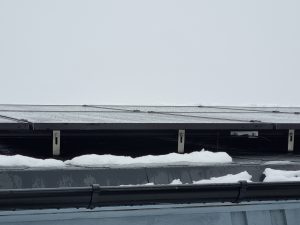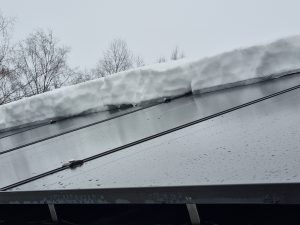An On-Grid solution is connected to the public electricity grid. This means that any excess energy produced by the system is fed to the grid, and now with the inclusion of ‘Net-Metering’, I as a consumer receive compensation for the excess electricity they generate. I get my compensation from Elvia.
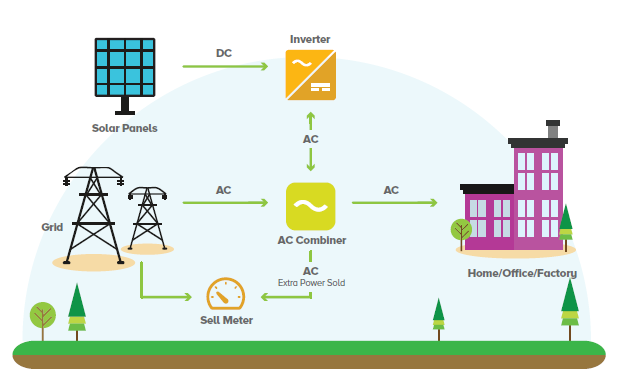
The different parts for my solar panel installation on my garage:
- 24 x Jinko Solar JKM395M-54HL4-B (1.72 m x 1.13 m)
- 1 x Solis Inv 10kW 3 fas IT_4G
- 1 x Solis PLUGIN WIFI stick
- 24 x Alu skinne SORT 2200
- 16 x Skinne skjøt
- 88 x Shingel, monteringskit 4 Horisontal
- 56 x Klemmer Ende/Mellom 30-46 SVART
- 5 x MC4 konnektor hann/hunn
- 100 x Kabel for solcelle 1 x 6mmm2 sort
- 1 x Merkeark Solcelleanlegg
- 1 x Merkeskilt bygg
- 1 x Endelokk sort
Specification on my solar panels:
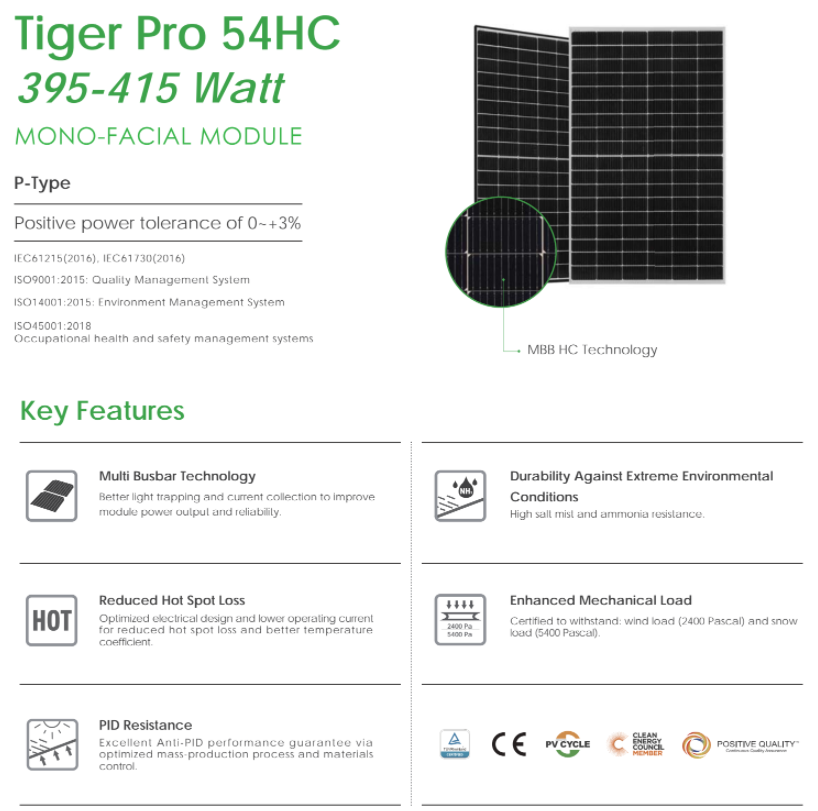

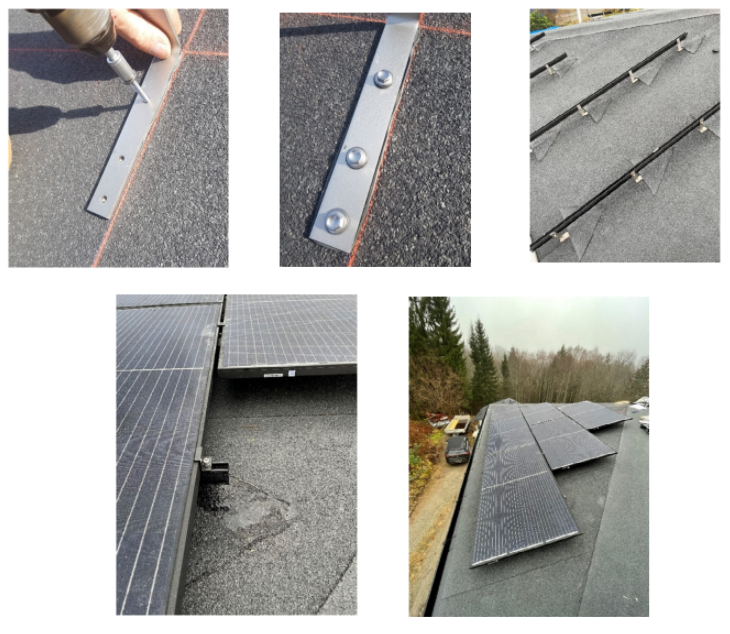
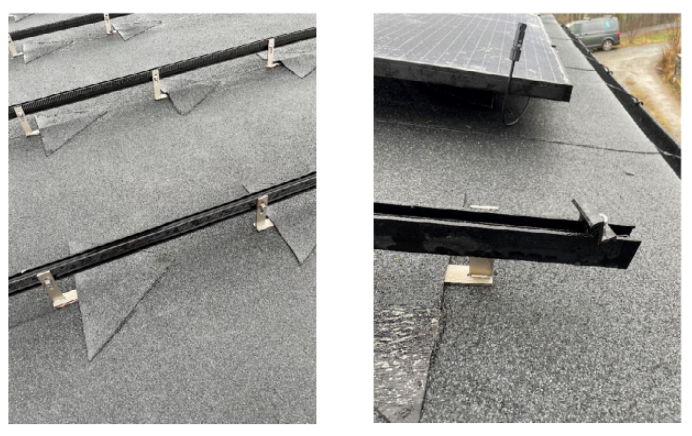

The pictures below is from my garage installation which is based on a horizontal solution.
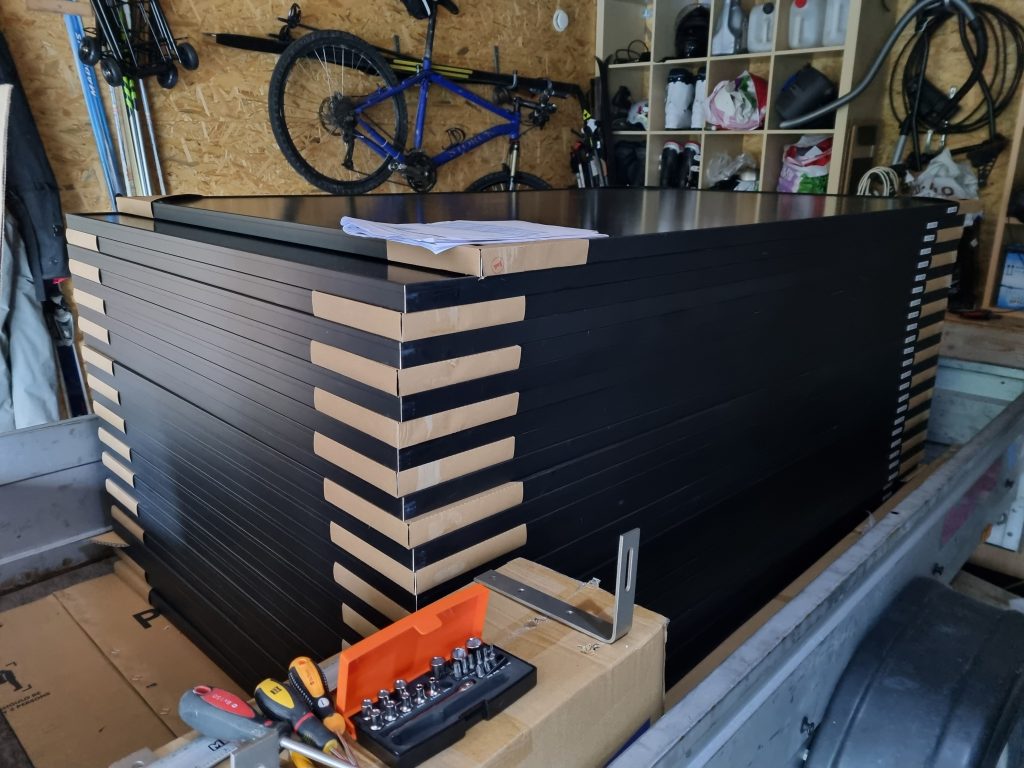
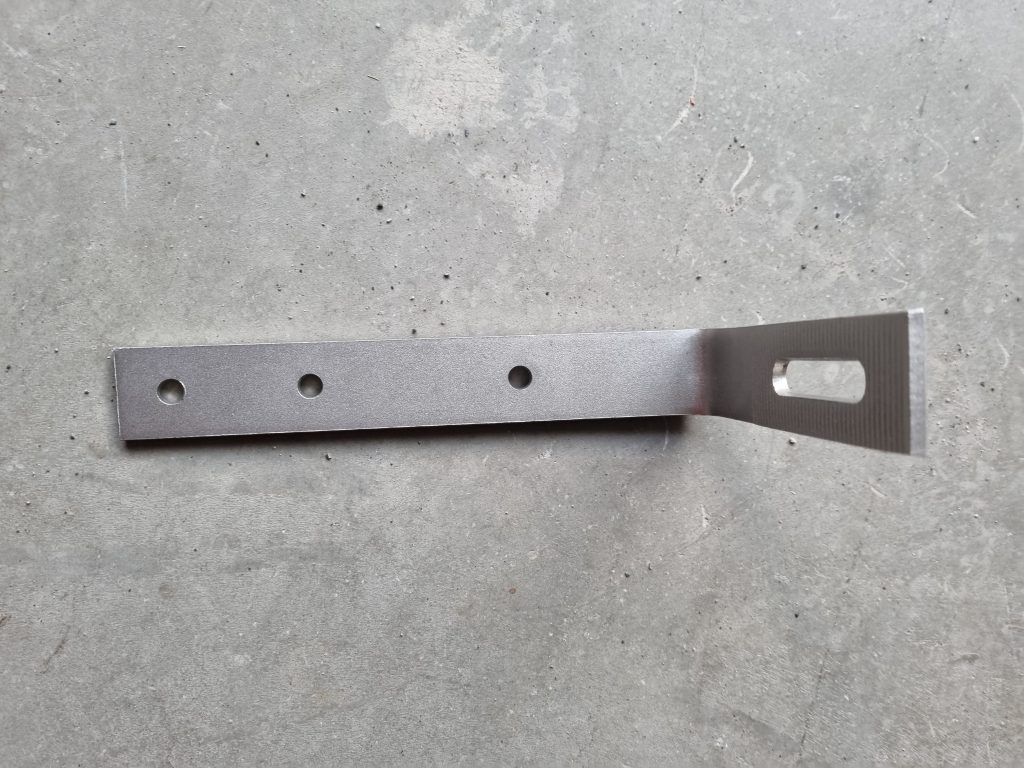
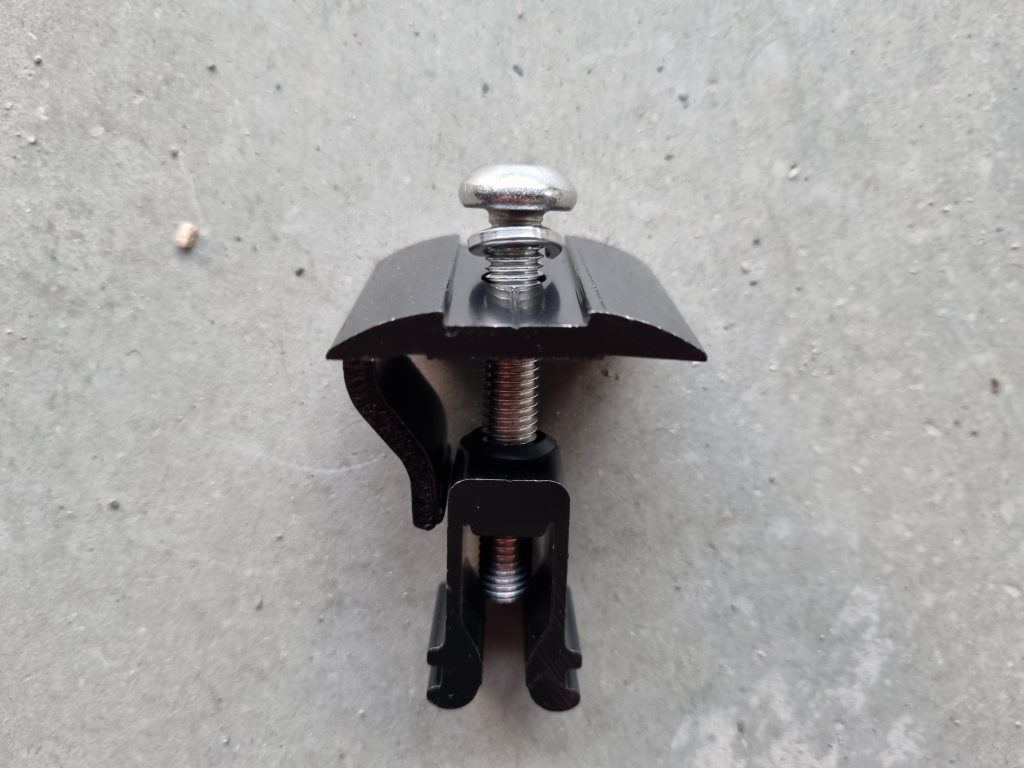
Hardware which presses the solar panel to the frame
Solis inverter installation
My on-grid inverter Solis converts solar power DC which is constantly varying and feed it into the house mains power supply (230 volt). It synchronises its output voltage and frequency to the mains power supply it is connected to. As the power of the solar increases, so does the output. To install a Solis inverter, you will need to follow these steps:
-
First, choose a location for the inverter that is close to the main electrical panel and has good ventilation.
-
Once you have chosen the location, turn off the main power supply and disconnect any existing inverters or backup power systems.
-
Next, mount the inverter onto the wall using the supplied mounting brackets, making sure it is level and secure.
-
Once the inverter is mounted, connect the solar panels to the inverter using the supplied cables.
-
Then, connect the inverter to the main electrical panel using the supplied cables and circuit breakers.
-
Finally, turn on the main power supply and check the inverter’s display to ensure it is functioning properly.
It’s important to note that installing a solar inverter can be a complex and potentially dangerous task, so it is recommended that you hire a professional electrician to handle the installation if you are not experienced with electrical work.
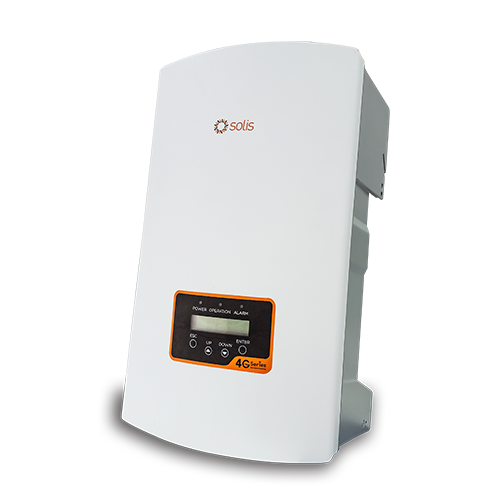
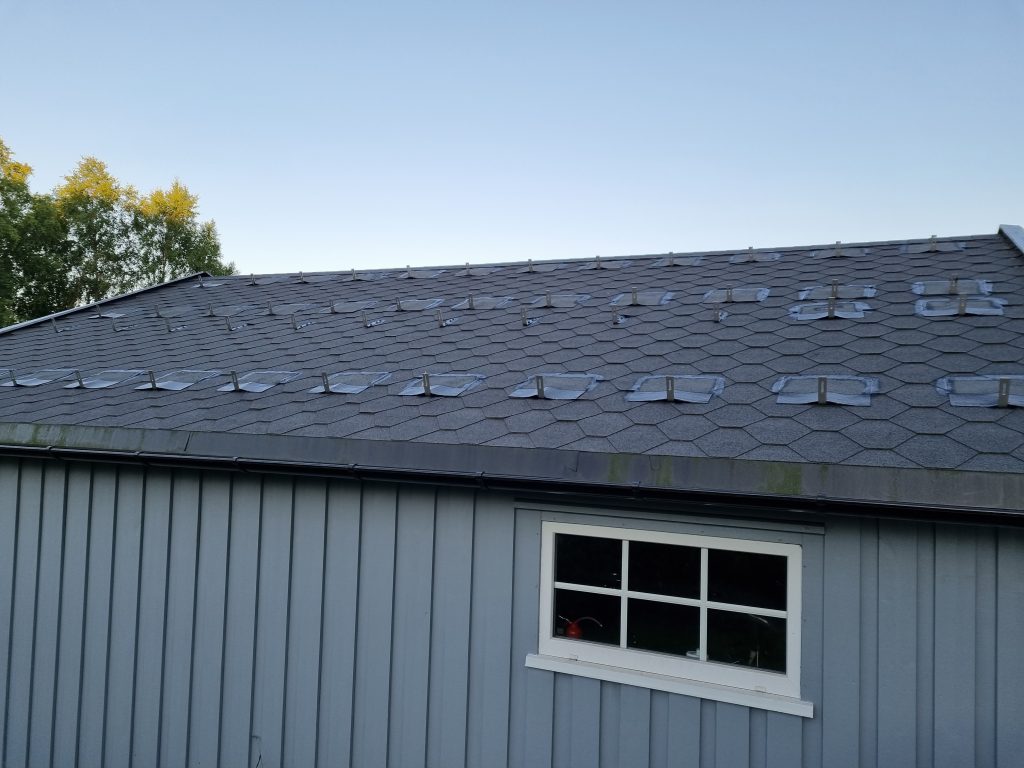
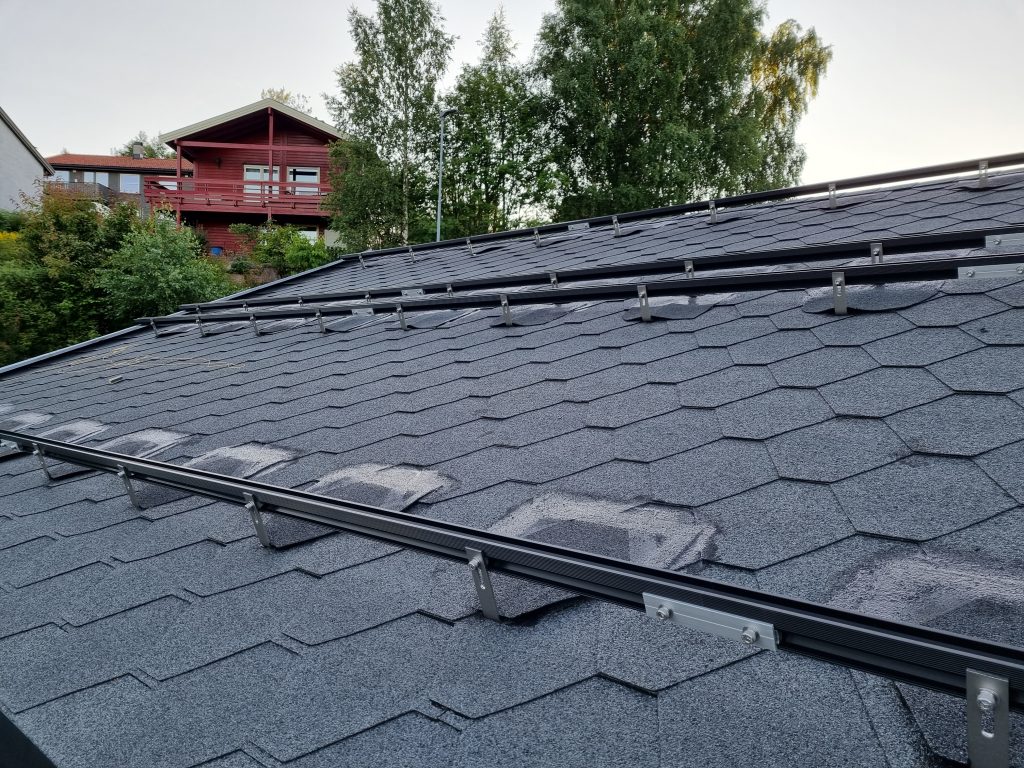
Using solar panel in the winter
Solar panels have the capability to handle a substantial amount of snow before breaking up. Your solar panel should be able to support 100 kg of snow per square meter (the best solar panel supports 500 kg of snow per square meter) before it begins to collapse. This means that the solar panel will be able to handle a significant amount of snow before breaking up.
In Norway, we have the following requirements:

This give us: 3600 Pa = 3,6 kPa = 3,6 kN/m2 which is 360 kg/m2.
If you are using Tesla Solar Roof tiles, your load can be even bigger. The video shared by Jason Lassen, a Tesla Solar Roof owner in Wisconsin, illustrated how the snow slid off the roof uniformly despite the fact that some of the tiles have solar cells embedded in them. This is an example of how solar roof tiles can be useful in the snow. Moreover, researchers at the test centers have shown that solar can still successfully generate electricity in snowy areas and other harsh environments [1].
- [1] Let it Snow: How Solar Panels Can Thrive in Winter Weather
- [2] Watch how Tesla Solar Roof automatically makes snow slide
- [3] CAN YOUR ROOF HANDLE THE WEIGHT OF SOLAR …
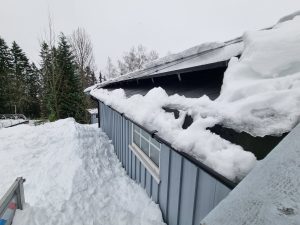
Different solar panel layout
This sketch below shows horizontal solution.
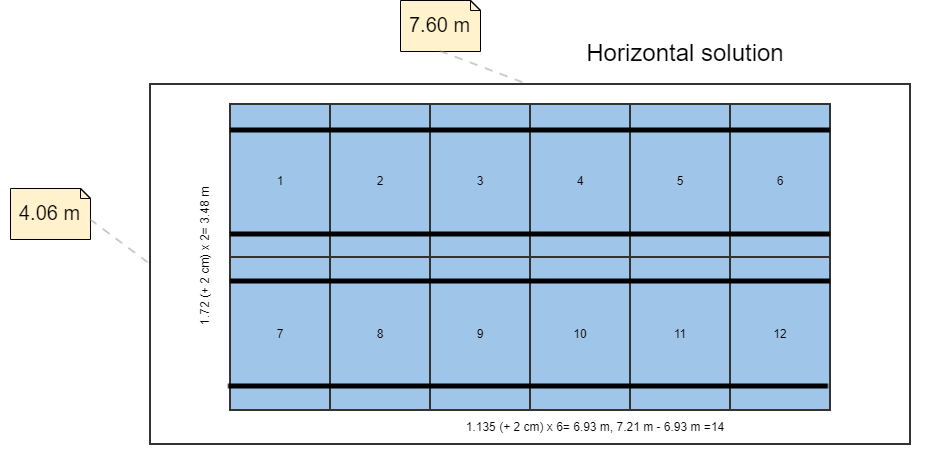
This sketch below shows the cable solution.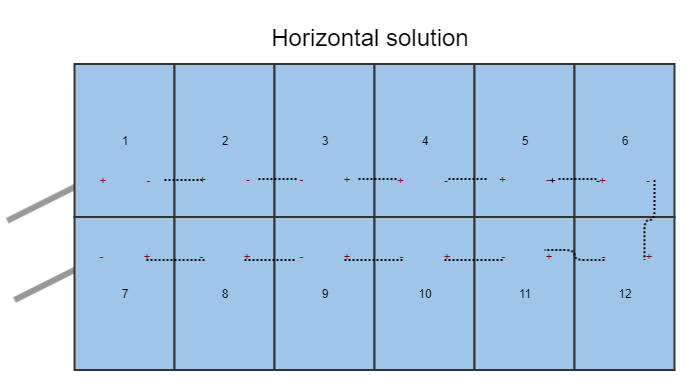 This sketch below shows electricity generated by the solar panels.
This sketch below shows electricity generated by the solar panels.

Conclusion
Installing solar panels on your home or business can help reduce your electricity usage and lower your electricity bills. When the sun is shining, the solar panels will convert sunlight into electricity, which can be used to power your lights, appliances, and other electrical devices. Any excess electricity generated by the solar panels can be fed back into the grid, earning you credits on your electricity bill. By using solar energy instead of electricity from the grid, you can significantly reduce your overall energy usage and save money on your electricity bills.
